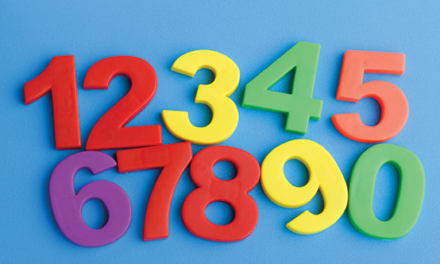
In a region that has endured many generations of intense sectarian conflict, new teachers must be prepared to handle controversial topics productively in the classroom.
My second week observing teacher education classes in Belfast begins with Paula Barstow’s intensive daylong session on teaching controversial issues for 24 graduate students preparing to teach citizenship at the secondary level. (Note that all names used here are pseudonyms.) In an activity that gets to the heart of Northern Ireland’s divided society, Barstow gives each small group a set of 30 cards bearing images linked to “the two communities here.” They include flags, murals, religious iconography, and symbols that have long been used to represent specific political parties, cultural activities, and historical events. In Northern Ireland, these images connote allegiance to a particular side, and many tend to be perceived as alienating if not downright threatening by the other.
Barstow instructs each group to decide how to sort the cards. But when she sees her preservice teachers automatically dividing them into two categories, one pile of cards representing Catholics and the other Protestants, she challenges them to think beyond religion. She says teachers should be prepared for visceral, negative reactions from students, and instead of eliciting emotional responses they should promote understanding of different cultural, political, and social identities.
As I describe below, the work of Barstow and the other teacher educator I studied in Northern Ireland — a society that has experienced decades of intense partisan conflict — offers timely lessons to educators in the U.S., where teaching controversial topics is both an urgent need and one that seems more fraught than ever. Our nation’s political climate has been rocked by confrontations over police violence, white supremacist rallies, kneeling football players, and many other issues, and polarization between parties has grown more intense (Hess & McAvoy, 2015). Increasingly, teachers face both teachable moments and tensions as turmoil in the wider society penetrates classroom walls (Pace, 2015).
In such a divisive age, how do we support beginning teachers in taking up the challenge of teaching controversial topics? How do we prepare them to create classroom environments that promote civil discourse? I visited Northern Ireland twice during the 2016-17 academic year to study a pair of teacher educators — Paula Barstow and Mark Drummond — who have wrestled with such questions throughout their careers, and I found that while their sociopolitical context is very different from what we face in the U.S., their experiences speak volumes to the situation that now confronts us in this country.
Historical context matters
Northern Ireland is a perplexing place. The countryside and coast are breathtaking, and the region’s economy, tourism industry, and cosmopolitan culture are thriving. But simmering just below the surface is the legacy of “the Troubles,” the popular term for the 30-year period of violent conflict that ended only after a 1998 peace agreement. National identity itself is a deeply controversial topic.
The two major communities in Northern Ireland are both white, Christian, and English speaking, and they have a great deal in common, including a love of sports and pubs and the use of dark humor to deal with conflict. But they differ along lines of national, cultural, and religious identity. Generally speaking, the Protestant community is Unionist and allied with Britain, and the Catholic community is Nationalist, with allegiance to Ireland — though, of course, there are exceptions as well as factions within these groups.
Northern Ireland shares an island with the Republic of Ireland, which lies to the south and west. Partial British rule of the Emerald Isle began hundreds of years ago. By the late 1600s, a series of military campaigns, political maneuvers, and a plantation policy, which dispossessed Irish landowners and brought in Scottish and English settlers, completed the conquest. Resistance to British rule finally resulted in the formation of an independent Ireland in 1921 and a Republic in 1937. But the six counties of Ulster in the North, with its Protestant majority descended from the settlers, remained part of Britain under the rule of a Unionist government. In the late 1960s, various groups organized to protest against long-standing discrimination against Catholics in politics, housing, and employment, and they launched a civil rights movement inspired by our own. The police used violence on protesters, which fueled anger and publicity. Violence escalated and sparked an unofficial war, fought by Republican paramilitaries such as the Irish Republican Army, Loyalist paramilitaries such as the Ulster Volunteer Force, the police, and British state security forces. Thousands of bombings and shootings resulted in more than 3,600 deaths and thousands of injuries, which took a heavy toll on such a small region.
The 1990s brought a series of cease-fires and finally the 1998 Good Friday Agreement, which marked the official transition to peace, establishing a power-sharing government led by the two major Nationalist and Unionist political parties. The agreement stipulates that Northern Ireland will remain part of Britain unless a majority votes to join the Republic. The end to violence was a remarkable accomplishment. Catholics no longer suffer institutional discrimination, their educational and social class mobility has greatly improved, and the Catholic and Protestant middle classes have become more integrated. However, working-class communities remain segregated, and Northern Ireland as a whole has yet to experience a robust reconciliation process.
Since the 1970s, educators have been consistent supporters of the peace process, working tirelessly to bring Catholics and Protestants together through school projects, classroom teaching, and human rights activism. Yet, most students still attend segregated schools — those controlled by the state mainly serve Protestant students, and those maintained by the Catholic Church mainly serve Catholic students. About 7% of students attend integrated schools, but government resources are limited, and there has been little funding to expand such schools. Many citizens and especially young people believe past conflicts should be left behind, but unresolved trauma, injustice, and mistrust are still woven into the social fabric. Further, because everyone is socialized to avoid difficult conversations about the past and schools are segregated, young people have few opportunities to work through these lingering tensions.
A structured, safe, and critical approach
Paula Barstow’s approach to teaching controversial topics is structured, explicit, pragmatic, and protective of students and teachers, but it does not shy away from thorny questions about politics and justice. During the daylong session described above, she engages preservice teachers in conversation about what it means to teach controversial issues in specific schools, and she gives them clear guidance about ways to ensure safety for students and teachers.
For example, following the symbols activity debrief, students work in small groups to develop a definition of “sectarianism.” They acknowledge the concept’s complexity and agree that, despite popular usage, sectarianism has more to do with politics, culture, and national identity than religion. But how, asks Barstow, does the media use the term? When expressions of religious, cultural, and political identity are labeled sectarian, doesn’t that serve to demonize the given communities? As teachers, she advises, they should be cautious about how they use the term and how it appears in their classroom materials. But at the same time, she argues, preservice teachers should not be afraid to focus on difficult topics, such as equal marriage, refugee policies, and the experience of political prisoners from both sides of the conflict. At the beginning of the session, she asks them to identify specific controversies that are likely to come up, and she asks to what extent they feel comfortable or anxious about teaching them. The class discusses various factors that will complicate how they teach these issues, such as religion, the age of the students, parental attitudes, and school location, and they also discuss whether they should disclose their own views to students. Barstow urges them to talk openly with their department heads and mentor teachers about their plans and to send letters to parents explaining what they’ll be teaching and why.
How could the history teacher question the students’ views, challenge their historical myths, and channel their emotions into a productive discussion, without threatening their identity?
Managing civil discourse through tools and framing
Most beginning teachers are anxious about classroom management problems they will face, and this anxiety worsens at the prospect of teaching controversial topics. To encourage civil discourse among younger adolescents, Barstow gives her class a tool called “FRED,” an acronym that represents a hypothetical member of the class who values Freedom of expression within a Respectful environment where everyone is seen as Equal, and Diversity is celebrated. Before embarking on lessons involving controversy, teachers can introduce discussion norms by asking, “How can we have this discussion in a way FRED would be happy with?” And they can respond to intolerant comments by asking, “What would FRED say?”
Further, Barstow addresses the question of how particularly explosive topics should be approached. Is it better to dive into students’ personal opinions about issues such as abortion, immigration, and the stories they’ve heard about relatives maimed or killed during the Troubles, or should these topics be approached in a “safer,” more distant way?
With all controversial topics, Barstow advocates that teachers frame the issue in terms of societal and political perspectives, perhaps using a human rights framework, rather than eliciting individual reactions from the start. Instead of asking students how they feel personally about the fast-growing ethnic minority community in their neighborhood, for example, the teacher should pose questions such as, “How can we evaluate Northern Ireland’s response to the increase in people from ethnic minority communities?” Issues should be framed, she argues, in terms that require analysis from multiple viewpoints and invite deeper discussion about the historical roots of contemporary conflicts.
However, Barstow also talks to preservice teachers about making time for students to “self-position” — whether publicly or privately — at the end of lessons. But she is adamant that teachers refrain from requiring students to divulge personal information or opinions because this could put young people at risk. Additionally, she opposes using whole group discussion as the centerpiece of a lesson because tensions can arise that are difficult to manage, and some students inevitably feel their voices aren’t being heard. Rather, she introduces preservice teachers to a variety of more contained discussion methods such as jigsaw, deliberation (also known as structured academic controversy), carousel conversations, circular brainstorming, and walking debates. As the course progresses, she models all of them.
Following the daylong session on teaching controversial topics, Barstow returns to themes she introduced that day. Later that month, for example, she has the preservice teachers brainstorm ideas about how to teach about the Asher’s Bakery controversy, which involved a Belfast bakery’s refusal on religious grounds to fulfill an order for a cake decorated with the words “Support Gay Marriage.” (Equal marriage is a highly charged and divisive issue in Northern Ireland.) And at the end of the year, she requires them to write an essay, drawing on scholarship and their student teaching experience, about the role teachers should play in civic education and the stances they should take when teaching controversial issues. The goal is to push them to reflect on the political nature of teaching, educational values, and choices they must make, such as when to take an impartial position and when to take a stand against injustice.
Using disciplinary tools for exploration
Mark Drummond — Barstow’s colleague from another university in Northern Ireland — takes a somewhat different approach to working with aspiring teachers. As a history educator, he focuses on his discipline’s ways of inquiring into the past and its continuing influence on the present, using primary and secondary sources as evidence to support interpretations. However, he also recognizes that students tend to have personal responses to emotive historical content, and he urges teachers to embrace and discuss those responses, even though it can be challenging to do so.
By February, when I revisit his class, the history cohort has become a tight-knit group. During two sessions devoted to teaching sensitive topics in Northern Irish history, Drummond dives deep into film clips, web sites, and teacher-made materials to explore differing reactions to controversial events. He uses a kind of Socratic questioning to probe and push student thinking about how to best teach such issues, and he often uses humor to acknowledge and defuse tensions.
To begin the first session, Drummond leads an animated conversation about what makes history controversial and the emotions that historical events often evoke. He tells about a teacher working in a predominantly Protestant school in 1990. One day, the teacher was leading a discussion, touching on evidence from a variety of sources, about the 1916 Easter Rising and the British government’s execution of its 15 leaders. The Rising was the armed revolt in Dublin that led to the killing of hundreds of people, mass arrests, and martial law, and the executions catalyzed Irish resistance, which led to independence. Students demonstrated critical thinking about multiple viewpoints and criticized the government for being stupid. The teacher then asked if there was a connection between that event and the British response to the 1981 hunger strikes by Republican paramilitary prisoners. The hunger strikes were a culmination of five years of protests, which began when the British revoked their status as political prisoners. The government refused to reinstate this status and its privileges while 10 people starved to death and violence escalated. In reaction to the teacher’s question, says Drummond, students put up an “emotional wall,” as some retreated in silence, and others rejected the legitimacy of the question. He surmises that the shift from a rational discussion of 1916 to events that were still “raw” was an emotional shock.
The preservice teachers respond to the story with an animated discussion of how they might approach this challenge today, given ongoing resistance to emotionally charged material that confronts entrenched views. Drummond asks, how could the history teacher question the students’ views, challenge their historical myths, and channel their emotions into a productive discussion, without threatening their identity? He talks with the preservice teachers about knowing the community context, tackling misconceptions creatively rather than head-on, using evidence, building trust, and complicating group identities instead of pigeonholing Unionist and Nationalist perspectives.
Is it better to dive into students’ personal opinions about issues such as abortion, immigration, and the stories they’ve heard about relatives maimed or killed during the Troubles, or should these topics be approached in a “safer,” more distant way?
Identifying perspectives, analyzing sources, using humor
Drummond starts the next day by showing a slide labeled “Metacognition,” which poses the question, “What in my background might influence how I interpret the 1641 rebellion?” The challenge, he explains, is to get students to think about the influence of background, family, and community on how they see the past. The 1641 rebellion was a pivotal event with lasting repercussions. It involved a bloody uprising of Irish Catholics in which many Protestant settlers were killed and that inflamed sectarian conflict. Drummond asks the preservice teachers to work in pairs, and he distributes to each a teacher-made packet on the rebellion. On the first page are two copies of a historic, violent image representing the alleged massacre at Portadown (a well-known episode) for students to annotate, both from the perspective of the “Native Irish” and from the perspective of the “Protestant Settlers.” On the next page are excerpts from primary and secondary sources, including questions to guide analysis.
Following up on the pair work, Drummond leads a conversation about the need for history teachers to be thoughtful in choosing sources that support more than one interpretation. Particularly when dealing with such a divisive historical event, he argues, it is critical to provide materials that can complicate, if not challenge, the preconceptions students bring from home.
Serendipitously, two members of the class recently taught about the 1641 rebellion during their school placements. As they share their stories, Drummond asks about the materials they used, and one of them, Tony, says that he brought in an Orange Order banner (representing a Loyalist organization) with an image of the Portadown massacre. “I’ve been searching for one of those,” says Drummond, eliciting chuckles. “You’ve obviously got connections with the Orange Order,” he teases, and the class erupts in full throttle laughter. Tony keeps everybody laughing when he says that when he put the banner up on the board to show students, he realized that it read “LOL” (“laugh out loud,” in online texting) for Loyal Orange Lodge.
Drummond understands that if educators hope to confront deeply held biases, they must create a warm classroom environment (Clark & Avery, 2016) in which students feel comfortable enough to consider information that challenges their prior beliefs. He asks probing questions, listens carefully, and pushes for deeper thinking while showing that joking about traditional partisan allegiances is a way to transcend division. In short, he models what it means to establish a respectful and trusting (and good-humored) rapport with students that allows students to express and examine their views without fear or defensiveness.
Challenging avoidance
In this session, Drummond goes on to ask the class whether they would use primary source materials that describe rebels tearing babies out of women’s wombs or if they would opt for secondary sources written by historians. Further, he asks, would they teach this topic differently or choose different materials depending on whether they worked in a Protestant or Catholic school?
One member of the class says she would be worried about teaching such an inflammatory piece of history. Drummond challenges her, asking, “Is it OK for young people’s understanding of historical events to be shaped solely by what they see on banners carried in parades and not by studying it at school?” Tony chimes in about the significance of the 1641 rebellion, noting that it was the first big explosion of sectarianism in the region, setting off centuries of conflict. As a student teacher in a Protestant school, he had asked pupils to think about why the native Irish might have turned to violence, and students had been eager to learn and willing to consider that perspective.
Like Barstow, though, Drummond cautions against relying on whole-class discussions when teaching lessons on controversial topics. He argues that doing so is too risky, whole-class discussion is not part of the pedagogical tradition in Northern Ireland, and it is sufficient to bring the class together at the end of a lesson to debrief. However, this raises an important question. Would it be beneficial to encourage larger, open dialogue at this point in time, given that the region has seen little violent conflict since the late 1990s? Or are partisan tensions still too explosive and the pedagogical challenges too great, making it unrealistic and unhelpful to expect large groups of students to have civil, productive, and inclusive exchanges over controversial topics? Research has found that in the U.S., classroom dialogue still is infrequent, but whole-class discussion is viewed as central to democratic education. Scholars argue it is essential that preservice teachers learn how to participate in and conduct such discussions as well as teach students how to participate in them (Parker & Hess, 2001). It may be the case, though, that in highly polarized communities such as Northern Ireland, teachers have good reason to rely on structured, small group activities rather than large group discussion.
Lessons learned
What can educators in the U.S. working in such tumultuous times learn from Barstow and Drummond’s approaches to preparing preservice teachers to examine highly charged topics with future students? First, we learn that teacher educators must offer specific guidance on activities such as planning, communicating, framing, and engaging students. Teachers must reflect on their purposes, values, and stance as part of the planning process. Student teachers in particular must communicate about their plans to administrators, colleagues, and parents. Barstow advocates that they frame issues in terms of public policy, not as opportunities to share personal opinions. And Drummond advises that teachers engage students in metacognitive thinking about why people hold certain views.
We also learn that teacher educators must model good practice. Both Barstow and Drummond use rich resources to encourage students to investigate different perspectives on a topic, mainly through small group activities, and they model how teachers create trust by listening to diverse viewpoints, supporting minority views, and using humor to nurture bonds.
Finally, Barstow and Drummond lead reflective conversations with preservice teachers about the very real challenges involved in teaching controversial topics and doing so in different contexts. The teacher educators ground these conversations in preservice teachers’ field experiences and knowledge of schools and communities. And they provide opportunities for exchanges about the controversial topics they may teach.
Teacher educators often work under tight time constraints with much to accomplish. That was certainly the case with Barstow and Drummond. But in a climate of sociopolitical turmoil, preparing preservice teachers for addressing controversy with students is fundamental to our democratic mission. Lessons from Northern Ireland are particularly instructive given the divisions we are wrestling with in schools and communities across the U.S., and they offer inspiration as teachers and teacher educators grapple with very difficult questions about how to address current conflicts.
References
Clark, C.H. & Avery, P.G. (2016). The psychology of controversial issues’ discussions. In Journell, W. (ed.), Reassessing the social studies curriculum: Promoting critical civic engagement in a politically polarized, post-9/11 world (pp. 109-120). Lanham, MD: Rowman & Littlefield.
Hess, D.E. & McAvoy, P. (2015). The political classroom: Evidence and ethics in democratic education. New York, NY: Routledge.
Pace, J.L. (2015). The charged classroom: Predicaments and possibilities for democratic teaching. New York, NY: Routledge.
Parker, W.C. & Hess, D. (2001). Teaching with and for discussion. Teaching and teacher education, 17 (3), 273-289.
Citation: Pace, J.L. (2017). Preparing teachers in a divided society: Lessons from Northern Ireland. Phi Delta Kappan 99 (4), 26-32.
ABOUT THE AUTHOR

Judith L. Pace
JUDITH L. PACE is a professor of teacher education, University of San Francisco. She is the author of The Charged Classroom: Predicaments and Possibilities for Democratic Teaching .










